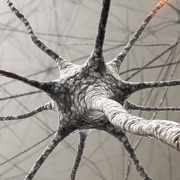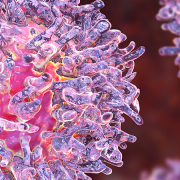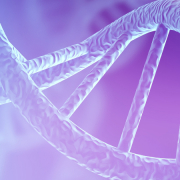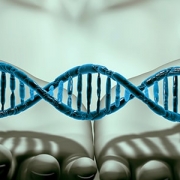Polycystic kidney disease and genomic testing
We explore genomics’ role in the cause, diagnosis and treatment of a complex kidney condition
Polycystic kidney disease (PKD) is an inherited condition that causes fluid-filled cysts to develop in the kidneys. It is the most common inherited kidney disease and there is currently no cure.
The condition is caused when a genetic variant disrupts normal development of the tubules in the kidney – these are microscopic structures essential to the kidney’s function of filtering the blood. As fluid collects in some of the tubules, they become cysts and stop functioning. As the cysts enlarge, they can put pressure on surrounding tissues, crushing adjacent tubules and further reducing the effectiveness of the kidney.
Different types of PKD
PKD has a variety of genetic causes, making it difficult to detect using genetic tests. There are two main types of the condition, each with their own unique challenges and considerations.
The most common form is autosomal dominant polycystic kidney disease (ADPKD), where the cysts generally do not typically develop quickly enough to cause symptoms until adulthood.
This form can be attributed to two genes: PKD1 and PKD2, with the PDK1 variant being both more common and more severe than PKD2. Because ADPKD is inherited in a dominant pattern, it is likely that a family member will have already presented with kidney disease. In about 10% of cases, however, the disease results from a spontaneous ‘de novo’ mutation, meaning that neither parent is affected.
Autosomal recessive PKD
Autosomal recessive polycystic kidney disease (ARPKD) is much rarer than ADPKD and tends to affect younger patients. It can begin before birth and is sometimes detected on ultrasound scans but is sometimes not evident until the child is over a year old.
To have ARPKD, the individual must inherit a non-functional copy of the gene involved, PKHD1, from each parent. Around 1 in 70 people are thought to carry this variant, but those with only one copy are unaffected by the condition.
PKHD1 can also affect lung development and some babies will die from breathing problems in infancy. Of those who survive, most will develop kidney failure by their late teens and will require dialysis or a kidney transplant.
Genomic testing: challenges and breakthroughs
Until recently, it has been very difficult to develop a genomic test for polycystic kidney disease. One reason for this is that other regions of the genome very closely resemble the PKD1 gene and can make tests inaccurate. As whole genome sequencing becomes mainstream in healthcare, however, more accurate results are now being obtained.
Another barrier to genomic testing has been a lack of treatment options following a diagnosis, but breakthroughs are being made. In 2015, NICE approved a drug called tolvaptan that can slow the progression of cyst development and delay kidney failure for some patients. This treatment is approved for patients with kidney disease stages 2 and 3.
As the autosomal dominant version of the condition does not usually cause problems until kidney function is already significantly impaired, some patients may benefit from monitoring before they show symptoms so that they can get maximum benefit from the treatment.
Although there is currently no cure for PKD and its variety of genetic causes make it difficult to diagnose, research continues in this area with the hope to find more effective and accurate tests and treatments.
Follow this blog for the latest news and breakthroughs in genomic testing and treatment of PKD.
Help, support and more information for patients is available on the Polycystic Kidney Disease Charity website.
–









